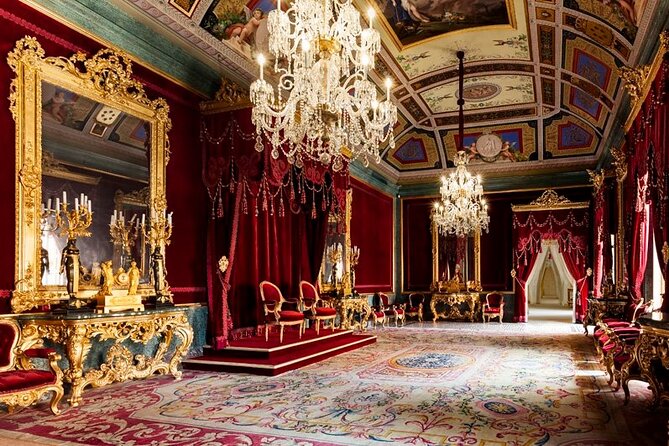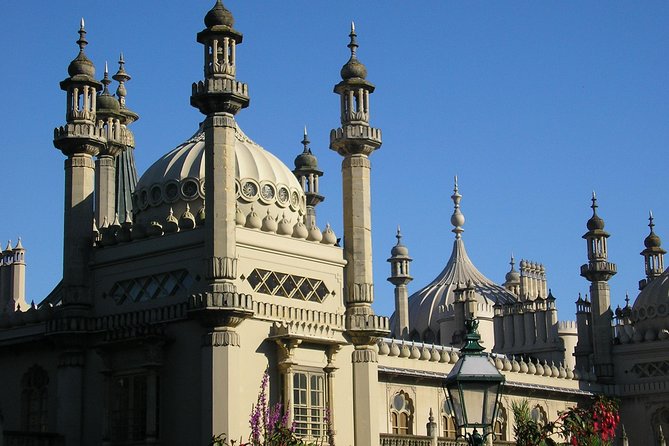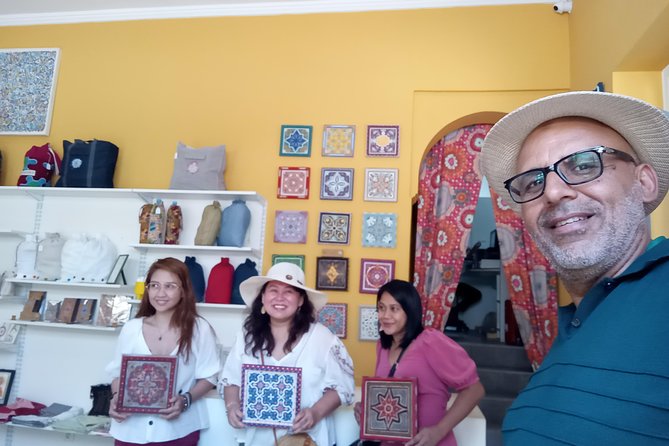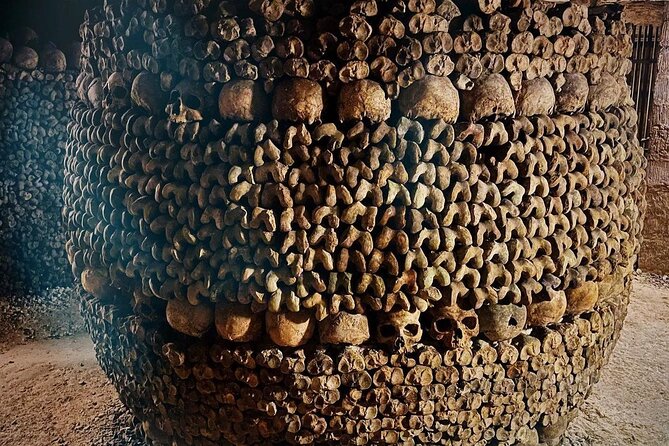Albania’s communist past casts a long shadow over the nation’s identity. Remnants of the oppressive regime, like the House of Leaves and Enver Hoxha Pyramid, stand as haunting reminders of the surveillance, persecution, and cult of personality that defined that era. Visitors to these sites gain a glimpse into the dark legacy of communism and its impact on Albanian society. But beyond the historical landmarks, there’s more to uncover about how this period shaped the country’s present and future.
Key Points
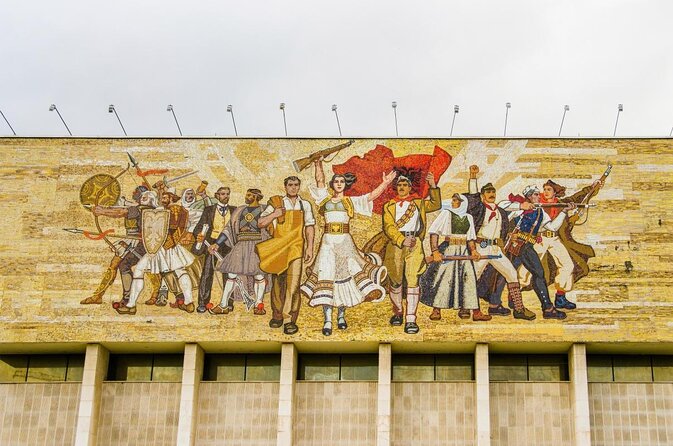
- The House of Leaves museum in Tirana offers a chilling glimpse into the oppression and surveillance tactics employed by the communist regime under Enver Hoxha.
- The Enver Hoxha Pyramid, once a mausoleum for the former dictator, stands as a stark and enduring reminder of Albania’s communist past.
- The diorama exhibit at the National History Museum provides a powerful depiction of the daily life and experiences of Albanians under the communist regime.
- The personal items and artifacts displayed at the National History Museum shed light on the totalitarian control and propaganda cultivated by Hoxha’s regime.
- The contrast between the iconic, modernist National Theatre of Opera and Ballet and the remnants of communism in Tirana symbolizes Albania’s struggle to reconcile its past and embrace a new future.
Tirana: A City of Contrasts
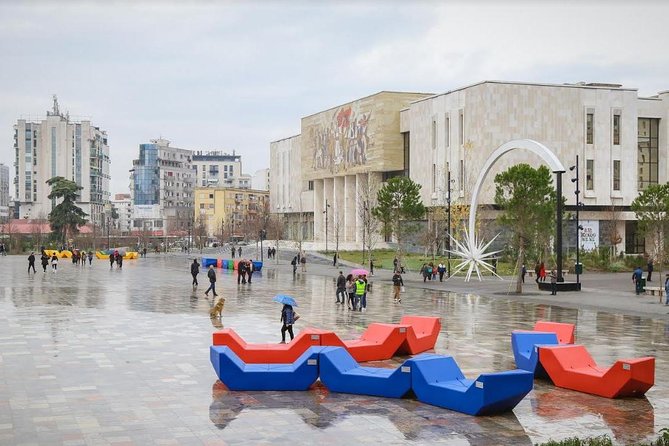
Tirana, Albania’s bustling capital, is a city of stark contrasts, where remnants of its communist past stand alongside burgeoning signs of modernity.
From the imposing Enver Hoxha Pyramid, a monument to the former dictator, to the vibrant Skanderbeg Square, the heart of the city, Tirana presents a juxtaposition of old and new.
The National History Museum, with its exhibits chronicling Albania’s tumultuous history, sits in the shadow of the contemporary National Theatre of Opera and Ballet.
Amidst this duality, the city’s residents navigate a changing landscape, embracing the nation’s transition while preserving its unique cultural identity.
Tirana’s evolution reflects the complexities of a country grappling with its communist legacy and forging a new path forward.
National Theater of Opera and Ballet
Nestled in the heart of Tirana, the National Theater of Opera and Ballet stands as a testament to Albania’s cultural legacy, serving as a premier venue for the country’s most esteemed artistic performances.
Built in the 1930s, the elegant structure boasts a neoclassical design and hosts a variety of operas, ballets, and musical productions throughout the year. Visitors can marvel at the theater’s grand interior, adorned with ornate chandeliers and intricate frescoes.
As one of Tirana’s iconic landmarks, the National Theater of Opera and Ballet offers a glimpse into Albania’s rich artistic traditions, captivating audiences with the country’s finest performers and cultural offerings.
National History Museum: Untold Stories

Exploring the National History Museum in Tirana unveils Albania’s captivating past, where each exhibit tells a story of the nation’s resilience and transformation through the tumultuous 20th century. From the communist regime’s oppressive artifacts to the nation’s pre-historic origins, the museum provides a comprehensive understanding of Albania’s complex history.
| Highlights | Insights |
|---|---|
| Enver Hoxha’s personal items | Albania’s transition to democracy |
| Relics from the Ottoman era | Effects of the communist dictatorship |
| Ancient Illyrian treasures | Preservation of cultural identity |
| Diorama of daily life under communism | Courage of the Albanian people |
The museum’s expertly curated displays and knowledgeable guides offer visitors an immersive experience, shedding light on the untold narratives that have shaped modern-day Albania.
House of Leaves: A Haunting Past
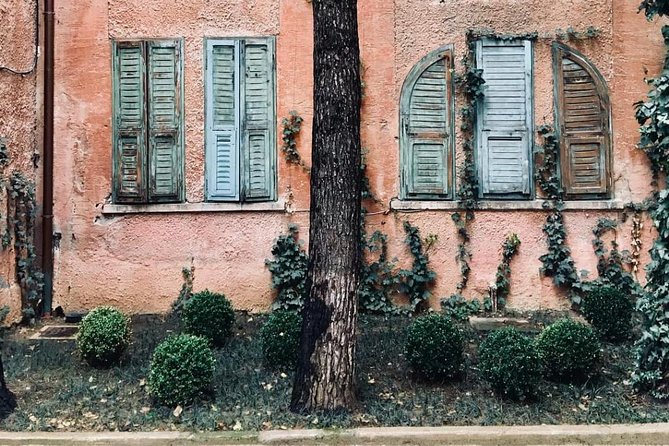
Amidst the captivating narratives of Albania’s past, the House of Leaves stands as a haunting reminder of the country’s dark history under communist rule. This nondescript building, once the headquarters of the dreaded secret police, now serves as a powerful museum. Visitors can explore the chilling exhibits that chronicle the horrors of the communist regime’s surveillance and persecution of its own citizens.
From the hidden listening devices to the meticulously documented files, the House of Leaves offers a sobering glimpse into the paranoia and oppression that defined that era. As they navigate these halls, guests are confronted with the truest face of communism – a harsh and unforgiving reality that shaped the nation’s identity for decades.
Enver Hoxha Pyramid: A Monumental Legacy
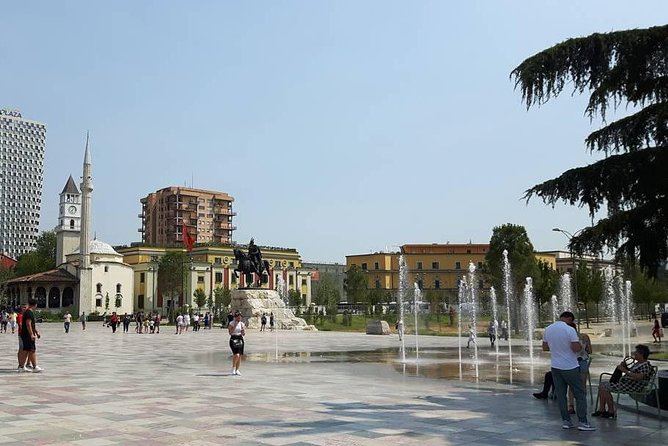
The imposing Enver Hoxha Pyramid dominates the skyline of Tirana, a colossal monument to the former dictator’s legacy. Towering at 35 meters, the pyramid-shaped structure was built in 1988 as a mausoleum for the communist leader.
Today, it stands as a stark reminder of Albania’s communist past. Visitors can explore the pyramid’s interior, which once housed Hoxha’s embalmed body. Though the structure has since been abandoned, it remains a popular attraction, drawing travelers eager to learn about Albania’s turbulent history.
The Enver Hoxha Pyramid is a powerful symbol, its very existence a testament to the enduring impact of the communist regime on the country’s national identity.
Clock Tower of Tirana: Time-Honored Tradition
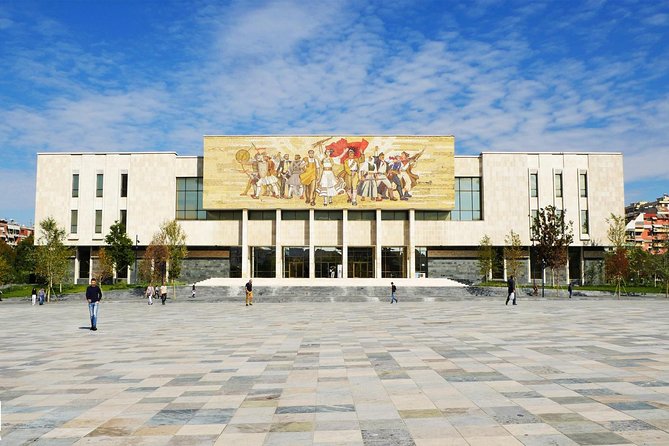
Standing tall alongside the Enver Hoxha Pyramid, the Clock Tower of Tirana has long been a prominent landmark in the city’s landscape, its timeless silhouette a testament to Albania’s rich cultural heritage.
Constructed in the 19th century, this striking clock tower has become an iconic symbol of Tirana’s history and resilience. Visitors can marvel at its intricate architecture, featuring a blend of Ottoman and Venetian influences.
The chimes of the clock, ringing out across the city at regular intervals, serve as a constant reminder of the passage of time and the enduring spirit of the Albanian people.
Today, the Clock Tower of Tirana remains a must-see destination for those seeking to enjoy the country’s captivating past.
Rakia Tasting: A Taste of Albania
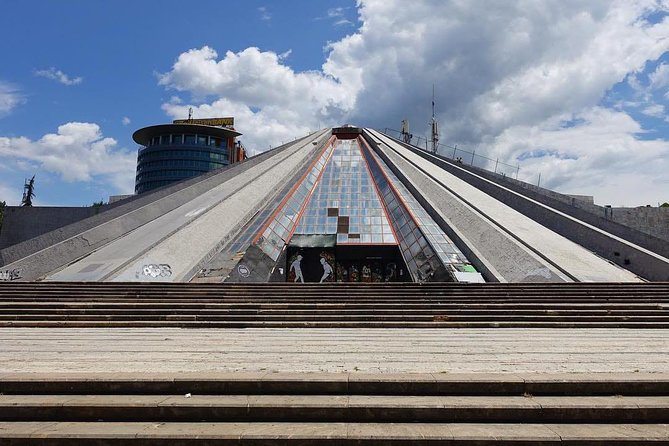
Complementing the rich historical tour, visitors to Tirana can indulge in a quintessential Albanian experience – the tasting of rakia, the country’s beloved distilled spirit. This potent brandy, often homemade, is a cornerstone of Albanian culture, served in both celebratory and everyday occasions.
The rakia tasting on this tour offers travelers a chance to:
- Savor the unique flavors, ranging from the classic grape-based version to aromatic fruit-infused varieties
- Learn about the traditional distillation methods passed down through generations
- Pair the robust spirit with local delicacies like byrek, Albania’s iconic savory pastry
Through this immersive experience, visitors gain a deeper understanding of Albania’s age-old traditions and the enduring role of rakia in the national identity.
Skanderbeg Square: The Heart of Tirana
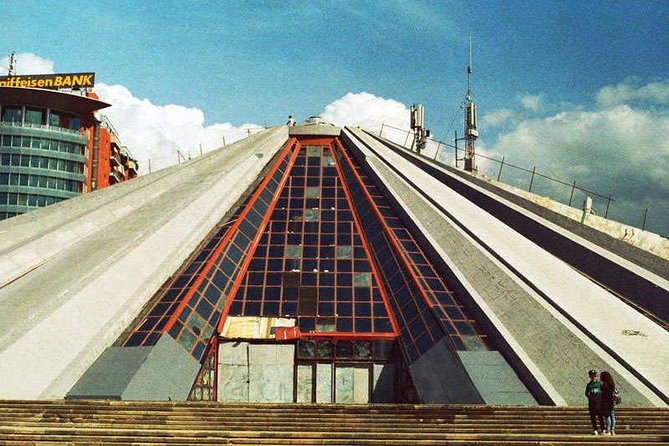
Skanderbeg Square’s central location makes it the vibrant epicenter of Tirana, serving as a bustling hub for locals and visitors alike. The square’s iconic landmarks, such as the Et’hem Bey Mosque and the National Historical Museum, attract hordes of travelers eager to enjoy Albania’s rich history and culture.
| Feature | Description |
|---|---|
| Monuments | Statues of national heroes, including Skanderbeg, adorn the square. |
| Markets | Vibrant outdoor markets offer a glimpse into the country’s thriving economy. |
| Events | The square hosts lively cultural festivals, concerts, and political demonstrations. |
| Accessibility | Situated near public transportation, the square is easily accessible for all. |
This dynamic public space reflects the beating heart of Tirana, where the past and present seamlessly converge.
Frequently Asked Questions
What Were the Key Policies of the Communist Regime in Albania?
The communist regime in Albania implemented strict control over the economy, society, and individual freedoms. Key policies included collectivization of agriculture, nationalization of industries, suppression of political opposition, and strict censorship of media and free expression.
How Did the Communist Era Impact the Daily Lives of Albanians?
The communist regime in Albania significantly impacted daily life. Citizens faced limited freedoms, economic hardship, and pervasive surveillance. Everyday activities were strictly controlled, and individuals had little autonomy over their personal and professional choices.
What Were the Architectural Influences During the Communist Period?
During the communist era, Albania’s architecture reflects a brutalist style with massive, austere structures like the Enver Hoxha Pyramid. This architectural influence emphasized functionality and control, aligning with the communist regime’s vision for the nation.
How Did the Regime Use Propaganda to Control the Population?
The regime used pervasive propaganda to shape public perception and control the population. Posters, slogans, and media glorified the communist regime while suppressing dissent. This propaganda campaign was central to the regime’s efforts to maintain its grip on power.
What Is the Significance of Enver Hoxha’s Role in Albania’s History?
Enver Hoxha was Albania’s communist leader for over four decades. He transformed the country into an isolated, authoritarian state and left a lasting impact on Albania’s history through his totalitarian rule and nationalist policies.
Recap
Albania’s communist legacy is etched in the haunting remnants that dot Tirana. From the sinister House of Leaves to the imposing Enver Hoxha Pyramid, these sites starkly illustrate the oppression and surveillance that defined the regime.
Visiting them offers a sobering glimpse into the country’s dark past, a cautionary tale of the truest face of communism and its lasting impact on Albanian society.


